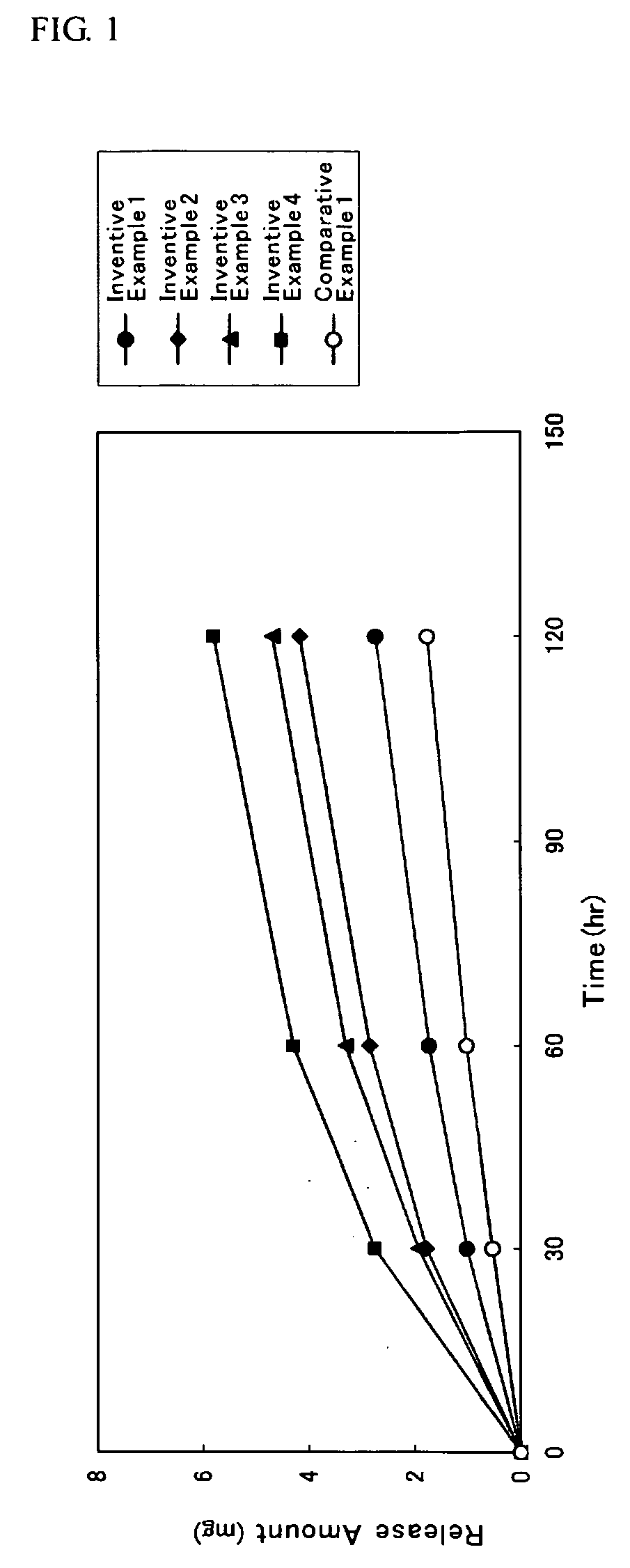Transdermal patch
a transdermal patch and patch technology, applied in the field of transdermal patches, can solve the problems of insufficient preservation stability decreased content of dmae or its salt, and hypertension, and achieve excellent transdermal absorbency of dmaes, improve cutaneous permeability of dmaes, and solve the problem of supine hypertension
- Summary
- Abstract
- Description
- Claims
- Application Information
AI Technical Summary
Benefits of technology
Problems solved by technology
Method used
Image
Examples
##ventive examples 1 to 20
Inventive Examples 1 to 20 and Comparative Examples 1 to 20
[0111]A solution used for the plaster layer was prepared by containing a DMAE, a solution of acrylic adhesive, fatty acid ester and an additive so that a weight composition of the DMAE, the acrylic adhesive, the fatty acid ester and the additive all in the plaster layer have a ratio as indicated respectively in Tables 3 to 6; and ethyl acetate was added so that the concentration of a solid content becomes 22% by weight; and then such mixture was mixed to become homogeneous. In the column for the fatty acid ester as indicated respectively in Tables 3 to 6, a carbon number of an alkyl group respectively for the saturated fatty acid and the saturated aliphatic monohydric alcohol having served as a raw material for each compound was stated one by one in the parentheses located on the right side of the compound.
[0112]To inform the source of supply for certain chemicals that were used in the experiment, the crosslinked polyvinyl p...
PUM
| Property | Measurement | Unit |
|---|---|---|
| carbon number | aaaaa | aaaaa |
| temperature | aaaaa | aaaaa |
| carbon number | aaaaa | aaaaa |
Abstract
Description
Claims
Application Information
 Login to View More
Login to View More - R&D
- Intellectual Property
- Life Sciences
- Materials
- Tech Scout
- Unparalleled Data Quality
- Higher Quality Content
- 60% Fewer Hallucinations
Browse by: Latest US Patents, China's latest patents, Technical Efficacy Thesaurus, Application Domain, Technology Topic, Popular Technical Reports.
© 2025 PatSnap. All rights reserved.Legal|Privacy policy|Modern Slavery Act Transparency Statement|Sitemap|About US| Contact US: help@patsnap.com



